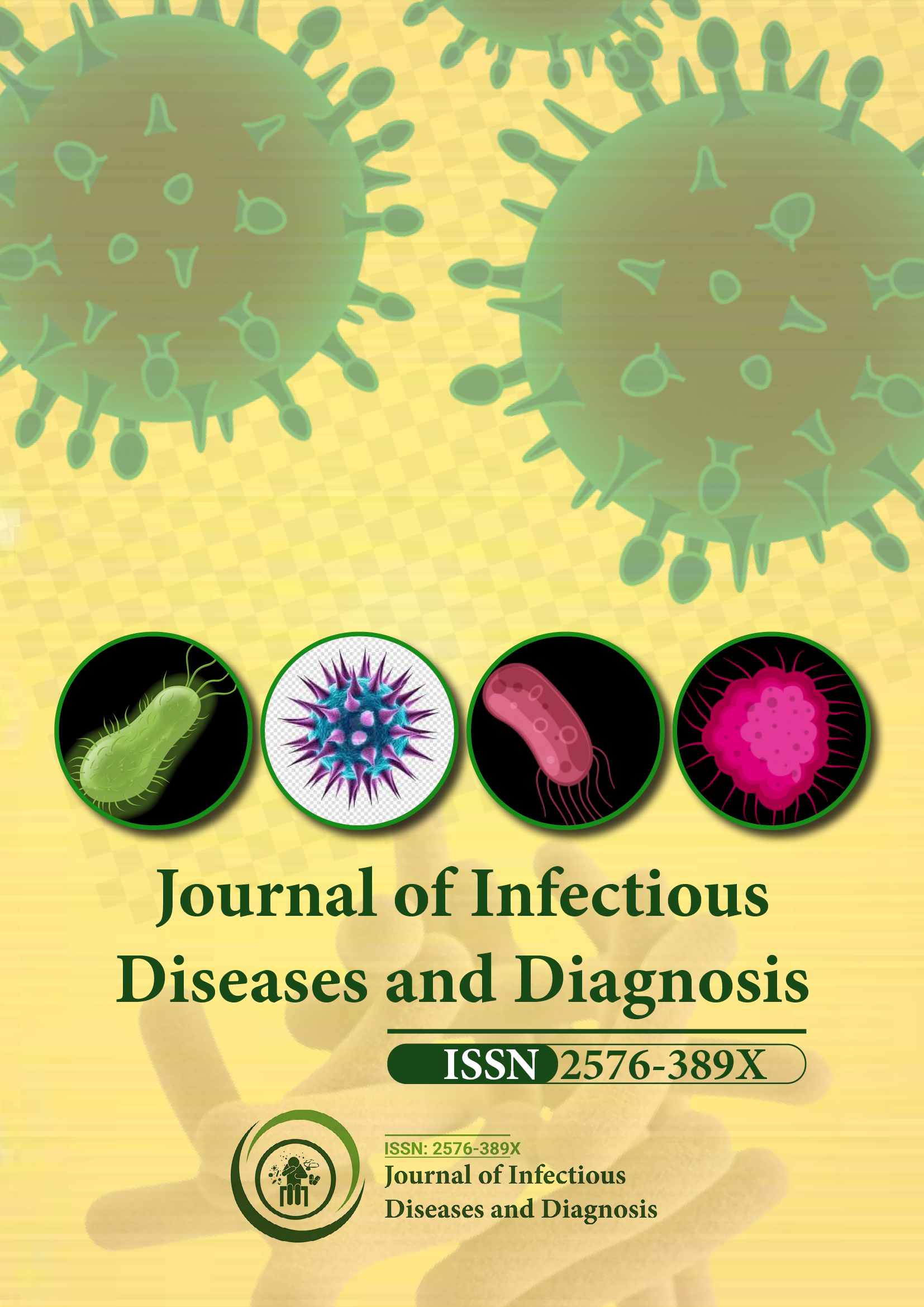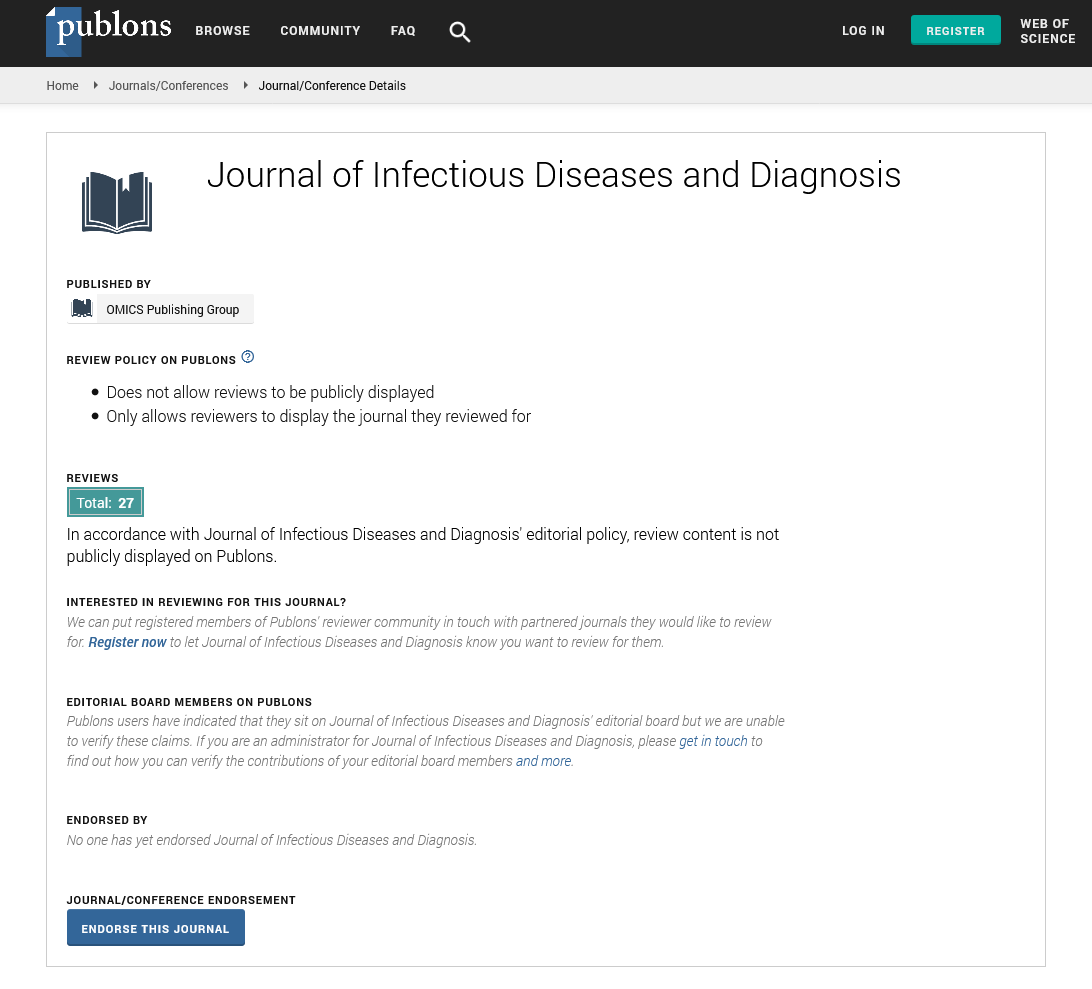Indexed In
- RefSeek
- Hamdard University
- EBSCO A-Z
- Publons
- Euro Pub
- Google Scholar
Useful Links
Share This Page
Journal Flyer

Open Access Journals
- Agri and Aquaculture
- Biochemistry
- Bioinformatics & Systems Biology
- Business & Management
- Chemistry
- Clinical Sciences
- Engineering
- Food & Nutrition
- General Science
- Genetics & Molecular Biology
- Immunology & Microbiology
- Medical Sciences
- Neuroscience & Psychology
- Nursing & Health Care
- Pharmaceutical Sciences
Perspective - (2024) Volume 9, Issue 1
Digital Health Platforms for Infectious Disease Monitoring and Early Detection
Neil Jacobson*Received: 02-Jan-2024, Manuscript No. JIDD-24-24770; Editor assigned: 04-Jan-2024, Pre QC No. JIDD-24-24770 (PQ); Reviewed: 19-Jan-2024, QC No. JIDD-24-24770; Revised: 26-Jan-2024, Manuscript No. JIDD-24-24770 (R); Published: 02-Feb-2024, DOI: 10.35248/2576-389X.24.09.257
About the Study
In an era dominated by technological advancements, the intersection of healthcare and digital innovation has resulting in to a change in perspective in the way we approach infectious disease monitoring and early detection. Digital health platforms, leveraging the power of interconnected devices and data analytics, have become pivotal in reshaping the landscape of public health. In this commentary, we will explore the multifaceted impact of digital health platforms, highlighting their potential benefits and addressing the critical considerations associated with their implementation in infectious disease management.
The emergence of digital health platforms
Digital health platforms encompass a diverse array of technologies, from mobile applications and wearable devices to sophisticated data analytics tools. Their integration into healthcare systems has enabled the continuous monitoring of various health parameters, contributing to a more proactive and data-driven approach to infectious disease surveillance.
Real-time data collection and surveillance: One of the key strengths of digital health platforms lies in their ability to facilitate real-time data collection. Through the utilization of connected devices and mobile applications, individuals can input relevant health information, such as symptoms, travel history, and other pertinent data. This real-time surveillance forms a dynamic dataset, enabling health authorities to detect potential outbreaks swiftly and allocate resources effectively.
Geospatial mapping for targeted interventions: The incorporation of geospatial mapping technology adds a spatial dimension to infectious disease monitoring. By visualizing the spread of diseases on a map, public health officials gain insights into hotspots and movement patterns, allowing for more targeted interventions. This spatial awareness proves invaluable in minimizing the impact of infectious diseases on communities.
Wearable devices and health apps for individual-level monitoring: Wearable devices and health apps contribute to individual-level monitoring, offering a continuous stream of data on vital signs, activity levels, and other health metrics. In the context of infectious diseases, these technologies serve as early warning systems. Any deviations from baseline health parameters can trigger alerts, prompting individuals to seek testing and healthcare professionals to intervene promptly.
Digital health platforms in early detection
The predictive analytics capabilities of digital health platforms enable the forecasting of disease trends based on historical data and current indicators. This proactive approach empowers health authorities to anticipate potential surges in cases, allocate resources efficiently, and implement targeted interventions. Predictive analytics forms an important component in the early detection arsenal.
Advanced machine learning algorithms play a pivotal role in analyzing vast datasets to identify subtle patterns indicative of infectious diseases. The ability of these algorithms to learn and adapt over time enhances the accuracy of early detection, providing a valuable tool for healthcare professionals in the battle against emerging threats.
Seamless integration with diagnostic tools completes the cycle of early detection. Digital health platforms can connect with laboratory databases and diagnostic devices, streamlining the process from data collection to confirmed diagnosis. This integration reduces the time between initial symptom presentation and definitive diagnosis, enabling quicker interventions.
Challenges and considerations
While the potential benefits of digital health platforms in infectious disease monitoring and early detection are evident, several challenges and considerations must be addressed to ensure their effectiveness and ethical implementation.
Data privacy and security concerns: The vast amounts of personal health data collected by digital health platforms raise legitimate concerns about data privacy and security. Striking a balance between harnessing data for public health purposes and protecting individual privacy is a critical challenge that requires robust regulatory frameworks and technological safeguards.
Equity and accessibility issues: The widespread adoption of digital health platforms may inadvertently exacerbate existing health disparities. Not all populations have equal access to technology, potentially creating gaps in disease monitoring and early detection. Efforts must be directed toward ensuring equitable access to digital health solutions to avoid perpetuating healthcare inequalities.
Validation of data and standardization: The reliability and accuracy of data generated by digital health platforms are essential for their successful integration into healthcare systems. Standardizing protocols and ensuring the validation of data become important considerations to enhance the credibility of these platforms in informing public health decisions.
Conclusion
In conclusion, digital health platforms represent a transformative force in infectious disease monitoring and early detection. Their ability to provide real-time data, leverage predictive analytics, and integrate with diagnostic tools offers unprecedented opportunities for proactive public health interventions. However, the ethical considerations surrounding data privacy, accessibility, and validation must be carefully navigated to ensure that these platforms serve as valuable tools in the collective effort to safeguard public health in the digital age.
Citation: Jacobson N (2024) Digital Health Platforms for Infectious Disease Monitoring and Early Detection. J Infect Dis Diagn. 9:257.
Copyright: © 2024 Jacobson N. This is an open-access article distributed under the terms of the Creative Commons Attribution License, which permits unrestricted use, distribution, and reproduction in any medium, provided the original author and source are credited.

